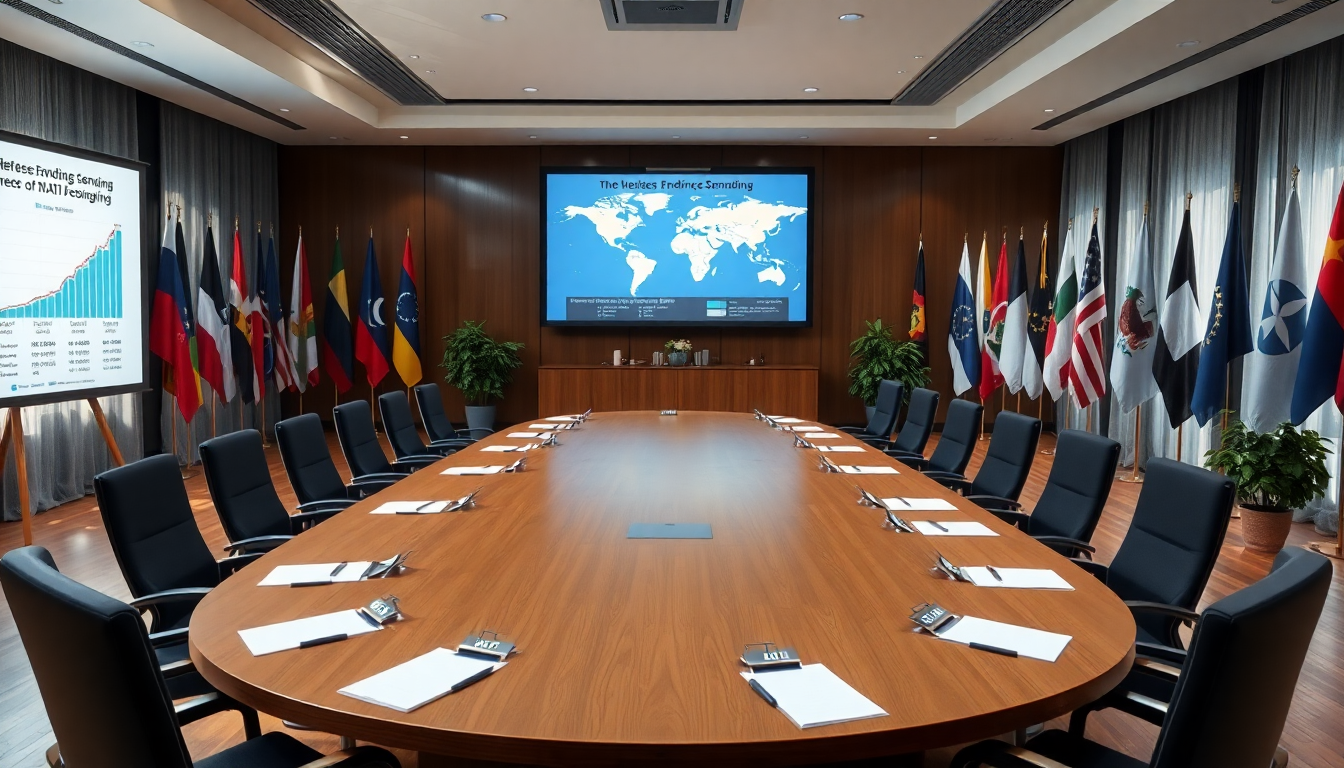Table of Contents
NATO, or the North Atlantic Treaty Organization, is currently navigating some serious changes in its defense strategy. With the geopolitical landscape shifting rapidly, the alliance is confronting a host of challenges that range from military threats to internal disagreements. So, what does this mean for the future of international security? The recent NATO summit gave us some insights into these dynamics, particularly around defense spending and the ever-evolving perceptions of threats, especially concerning Russia.
Let’s dive into what these changes really signify for NATO member states and the alliance as a whole.
Understanding NATO’s Defense Spending Commitments
At the recent NATO summit in The Hague, leaders gathered with a clear goal: to reassure U.S.
President Biden about defense spending commitments. The result? NATO member countries have agreed to allocate 5% of their Gross Domestic Product (GDP) to defense by 2035. This is a significant shift from earlier expectations and marks a united recognition of the need for improved military readiness in light of emerging threats.
But here’s the kicker: while this agreement may seem like a win for U.S. leadership within NATO, it reveals much deeper implications. European allies and Canada are waking up to the reality that they can no longer rely solely on the U.S.
for their security. This realization is prompting a reevaluation of defense strategies, with a stronger focus on self-reliance and collaborative security initiatives among member states. Isn’t it fascinating to see such a shift in mindset?
The commitment to ramp up defense spending highlights a broader understanding that shared security is vital.
As new threats emerge and the geopolitical landscape continues to evolve, member states must proactively ensure their own defense while collectively enhancing the alliance’s capabilities. This newfound commitment is a big step toward a more balanced distribution of defense responsibilities across NATO.
Shifting Perceptions of Threats within NATO
One of NATO’s biggest hurdles is the differing perceptions of threats among its members, particularly when it comes to Russia. At the recent summit, NATO leaders labeled Russia a “long-term threat,” a notable softening from earlier statements that considered it the “most significant and direct threat” to the alliance’s security. Why is this distinction so important? It highlights the varied viewpoints among member states about the urgency and nature of the threat posed by Russia.
Consider U.S. President Biden’s hesitance to view Russian President Vladimir Putin as an adversary; this reflects a fundamental division in how NATO members perceive threats. These disagreements could pose significant challenges to maintaining unity within the alliance. When there’s no consensus on shared threats, it undermines NATO’s core principle of collective defense and raises concerns about its cohesion during crises. Can you imagine the implications of such fractures?
The ongoing conflict in Ukraine only underscores these differing perspectives. While the U.S. administration regards the situation as primarily a European issue, many European allies see Ukraine’s security as crucial to overall continental stability. This discord in threat perception could have significant ramifications for NATO’s strategic decisions and its ability to respond effectively to aggression.
The Future of NATO and Global Security
NATO’s evolving defense strategy suggests a potential shift in power dynamics within the alliance. As European countries step up their defense spending and capabilities, the responsibility for collective security will increasingly shift away from the United States. This isn’t just about financial contributions; it’s about a broader recognition that European nations must take greater ownership of their security.
This transformation could lead to a rebalancing of influence within NATO, with decision-making power gradually moving from Washington to European capitals. While this shift may bolster Europe’s ability to tackle regional threats, it raises essential questions about the future of transatlantic relations and the U.S.’s role in European security. What does this mean for the future of NATO?
As NATO adapts to these new realities, it must also consider the implications of shifting global security dynamics. The increased focus on self-reliance among European allies could lead to a more fragmented approach to security, potentially undermining the collective strength that has been NATO’s hallmark since its inception. Isn’t it crucial for NATO to maintain that unity?
In conclusion, NATO is at a crossroads, facing the complexities of modern security challenges head-on. The recent commitments to increase defense spending, along with the evolving perceptions of threats among member states, will undoubtedly shape the alliance’s future direction. As NATO strives to remain relevant in an increasingly multipolar world, the need for cohesive and collaborative strategies will be more vital than ever. How will NATO respond to these challenges, and what does the future hold for international security?





